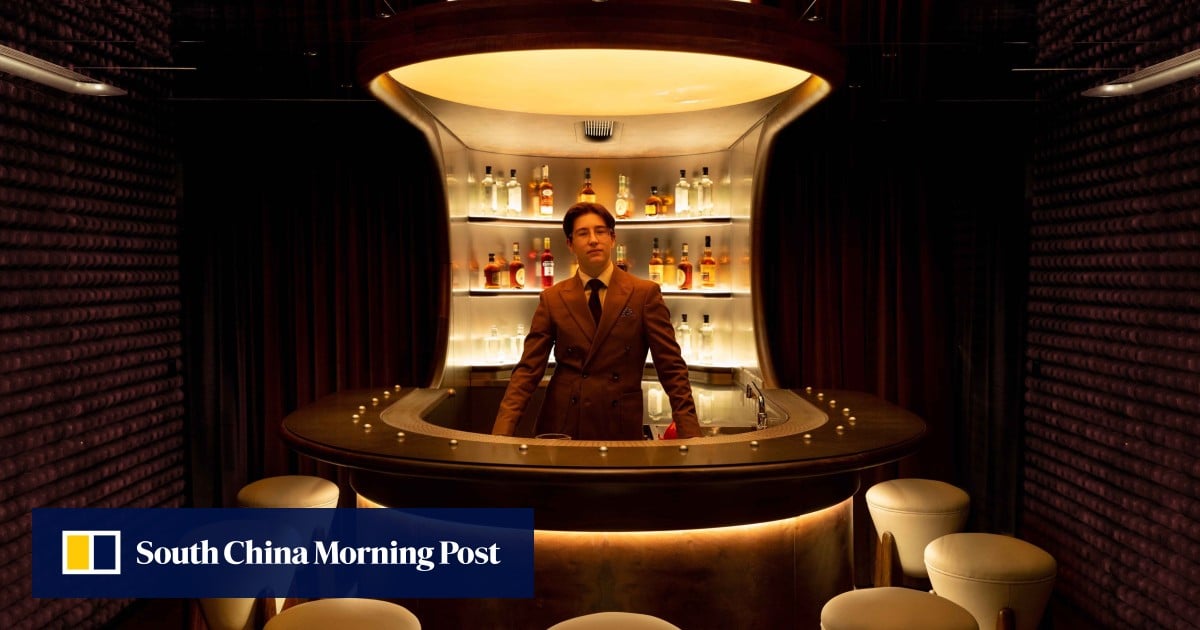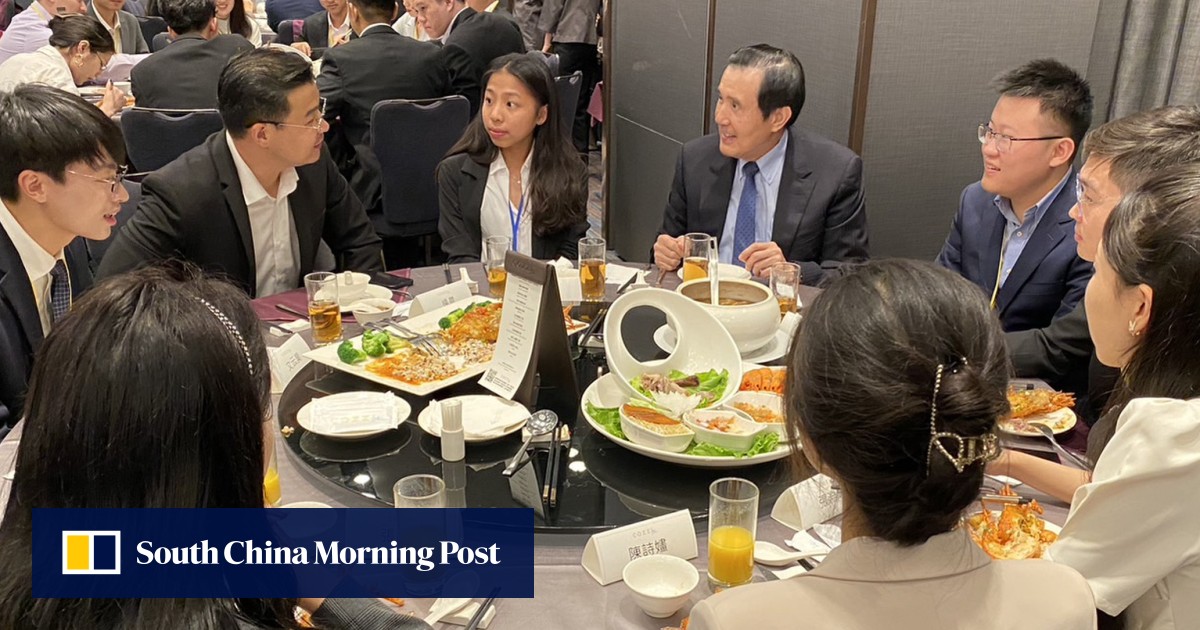Part of The Trilogy multi-genre music hub in Pottinger Street’s H Code in Central on Hong Kong Island, alongside Keyz nightclub and rooftop bar Wav, Ella pays homage to jazz great Ella Fitzgerald.
The lounge-style interior features jewel-hued furnishings, a marble-topped bar and poignant photographic reminders of Fitzgerald’s life. There are subtle design references to New Orleans, the birthplace of jazz, such as the bar’s fleur-de-lis logo.
“Hong Kong has seen a resurgence of retro bars but we only wanted elements of the style to avoid making Ella look clichéd or kitsch,” says Ludhani, adding that the existing bar counter and shelving from former bar Carbon was kept to avoid wastage.
12 of the best new restaurants and bars in Hong Kong in April 2024
12 of the best new restaurants and bars in Hong Kong in April 2024
A keyboard in the seating area is encased in a bespoke mahogany shell, incorporating a table top on one side for customers to sit at while the musician plays in front of them.
“It’s one of our most popular tables and the energy between the listeners and the pianist is electric,” says Ludhani.
“Live music in Hong Kong typically exists as a background to conversation and the bar. We have done things the other way round, making the music the core experience and designing the bar around it.”
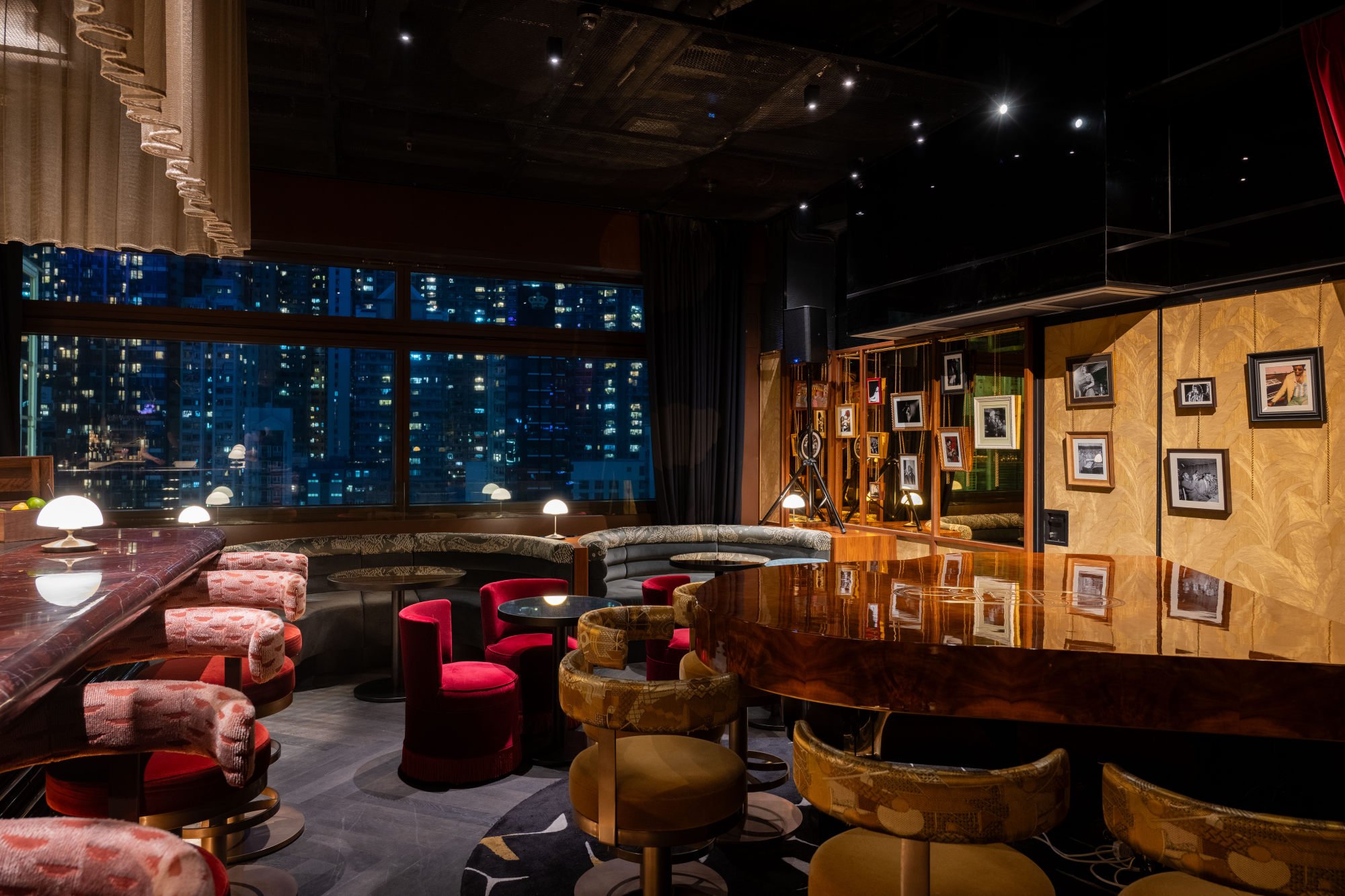
Although her plans to create a dramatic, Instagrammable entrance were deemed a fire hazard, almost as an afterthought she left the main access plain; this has frequently led to the bar being characterised as a speakeasy – no bad thing at a time when speakeasy-style venues are being embraced in Hong Kong.
These “hidden” bars, which are springing up all over the city, hark back to the Roaring 20s in the US and to Prohibition, when alcoholic drinks were sold illegally in secret bars.
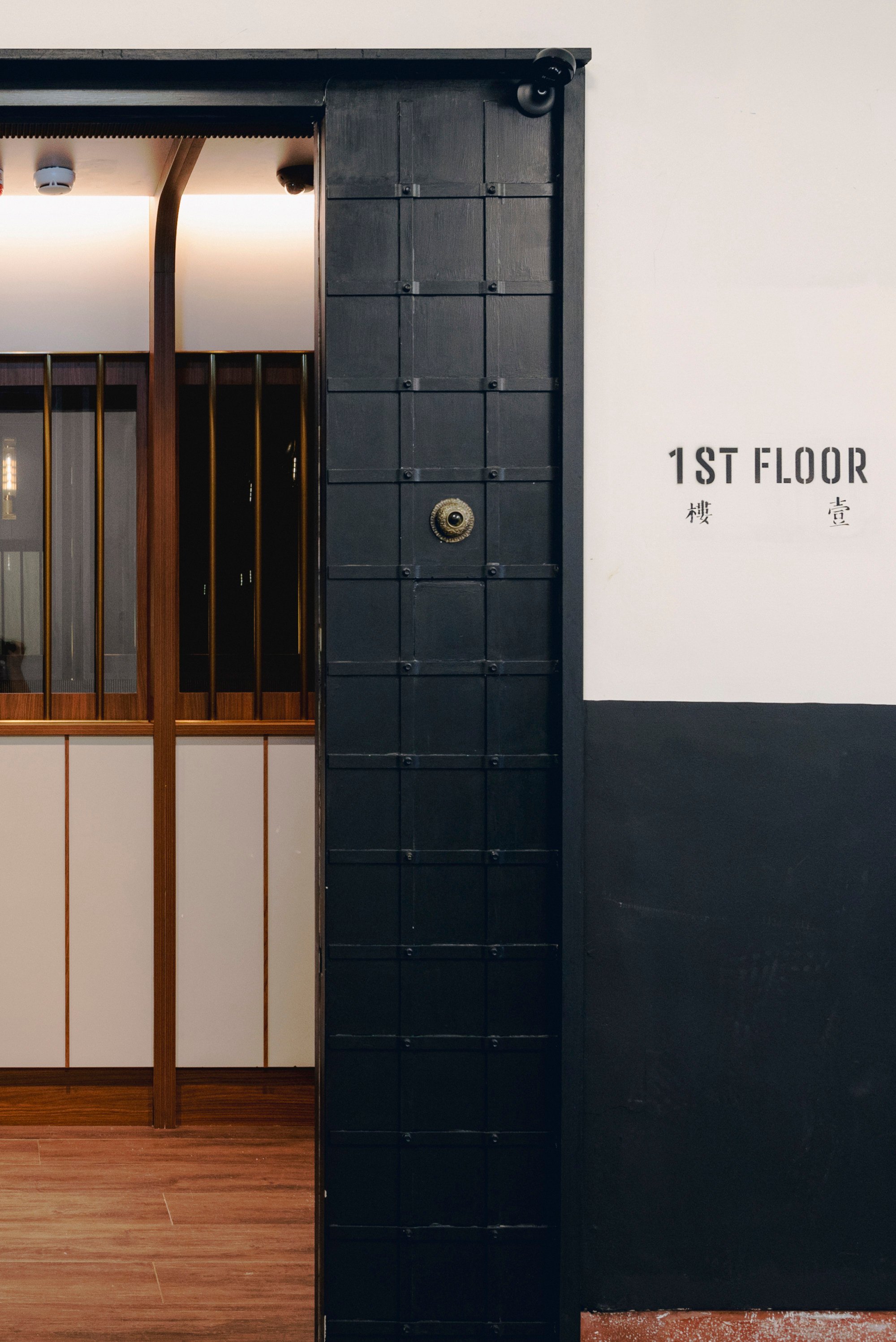
Design duo Etain Ho Siu-ting and Francis Lam Yuk-shui, of Canalside Studio, were keen to recreate a clandestine, Prohibition-style vibe and to incorporate aspects of the venue’s heritage and the previous bar.
Although 001 is in a less obscure location now, it is not easy to find. Tucked away in one of Tai Kwun’s many blocks, prison signage rather than the bar’s name is stencilled next to a formidable black iron entrance door that features the Graham Street bar’s original doorbell.
“Because 001 had a loyal customer base, we wanted to incorporate familiar elements of the original bar in addition to creating a new and distinct identity that fitted with the Tai Kwun environment,” says Ho.
“We also wanted to give customers an experience – sort of a cultural journey back in time.”
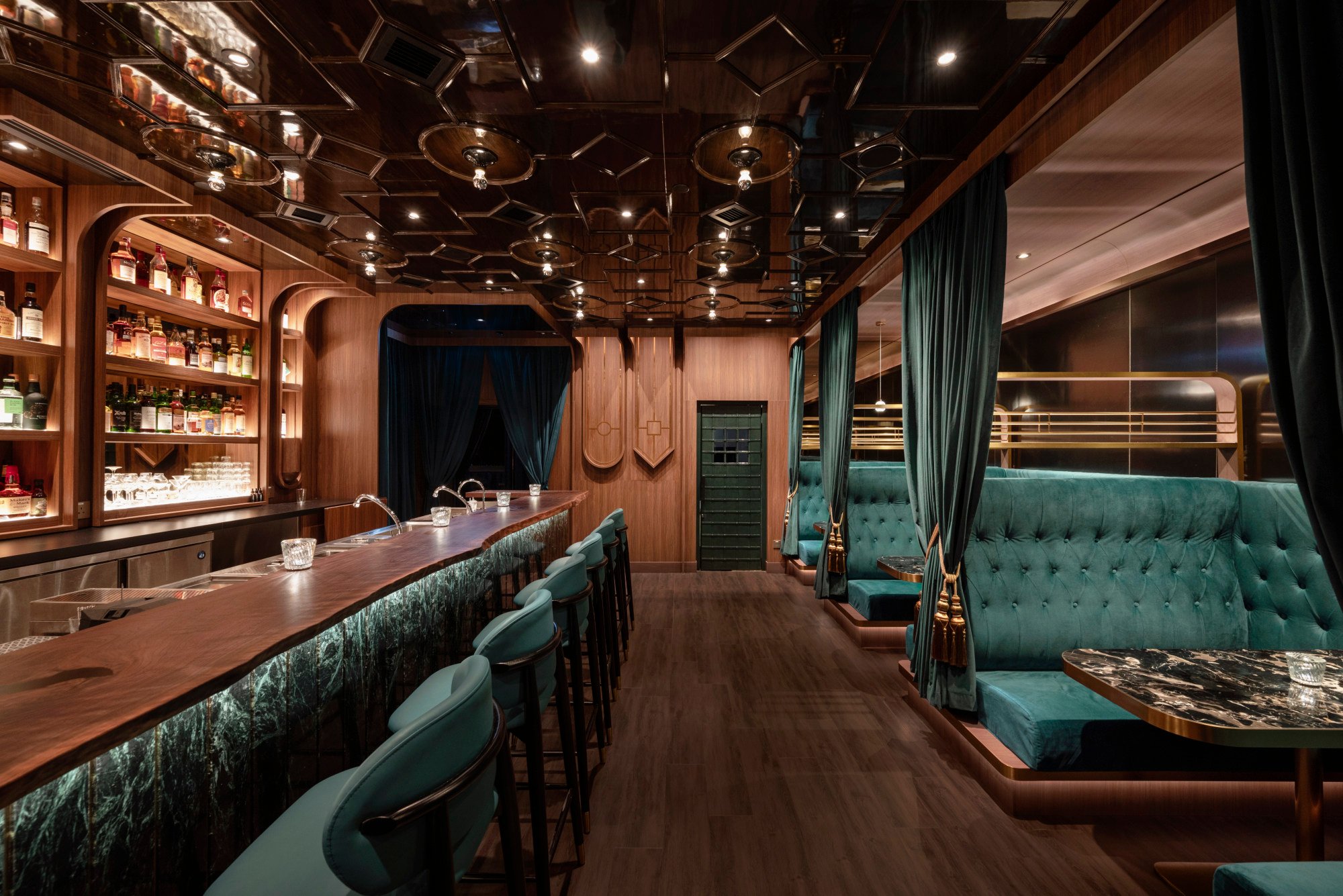
The floor plan breaks the venue into two distinct spaces – the Green Room with the main bar, which features curtained, Chesterfield-style suede booths, and the moodier Blue Room adjoining it.
Both feature reflective geometric patterns and brass elements as well as wood panelling, and exude a rich art deco feel.
Taking the original rectangular concrete space with windows and giving it a retro underground look was no mean feat because of the regulations surrounding the heritage property.
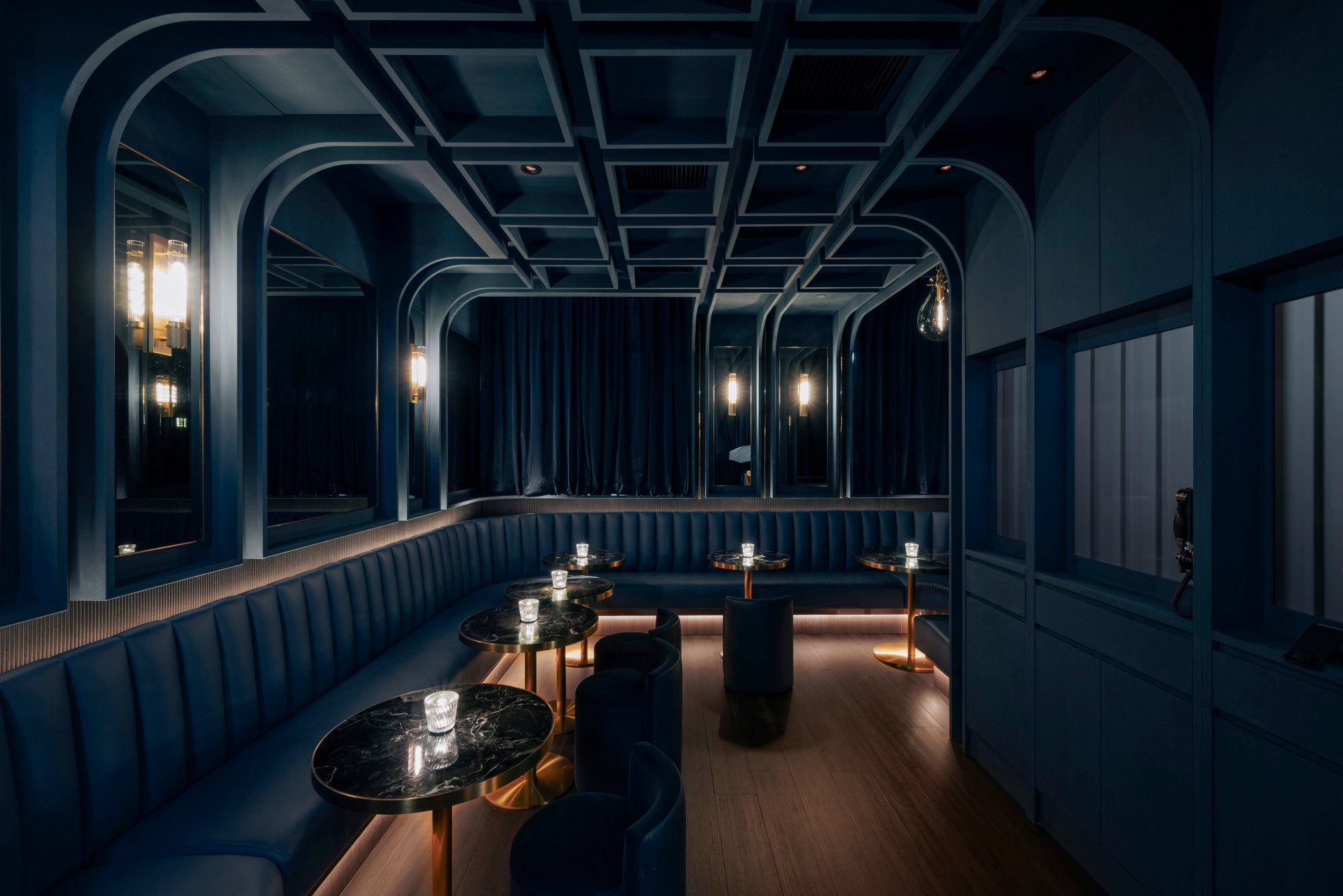
Government feedback and approval were needed for every detail and, prohibited from nailing anything to the walls, ceiling or floors, the team used existing anchor points and mortar joints to attach panelling and false walls to create its sultry ambience.
Accessed via a passage and an acoustic chamber lined in three-dimensional tiles to filter out noise from the food court, this futuristic take on a cocktail bar was inspired by the geometry of a subterranean rainwater reservoir.
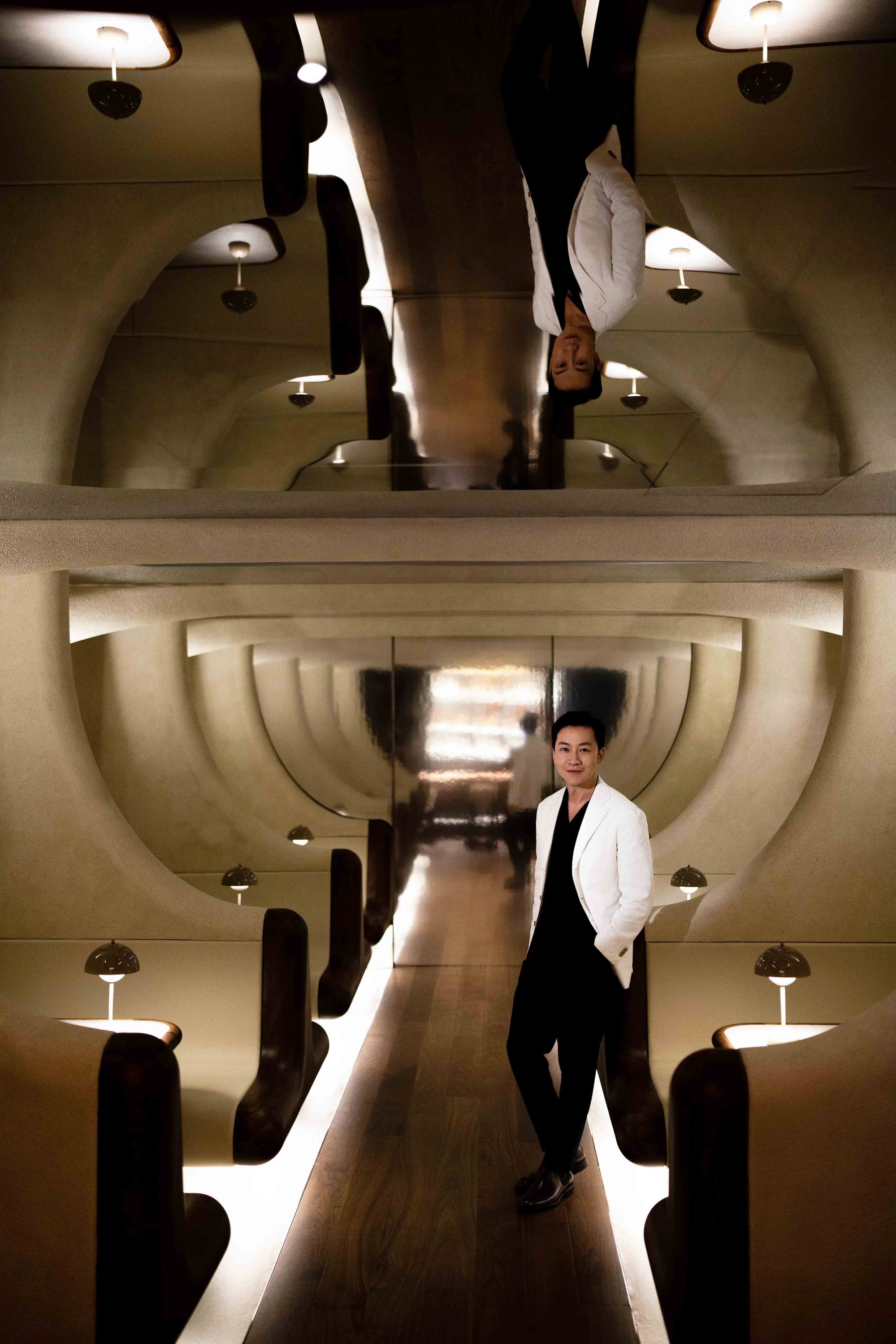
Although Artifact is in a low-ceilinged basement, overhead mirrors give the impression of much greater height and reflect the various shapes to produce an otherworldly effect.
Some patrons liken Artifact’s interior to the set of a dystopian movie; others describe feeling as though they are in the ribcage of a colossal animal. The surreal quality and immersive ambience enhance the sense of adventure.
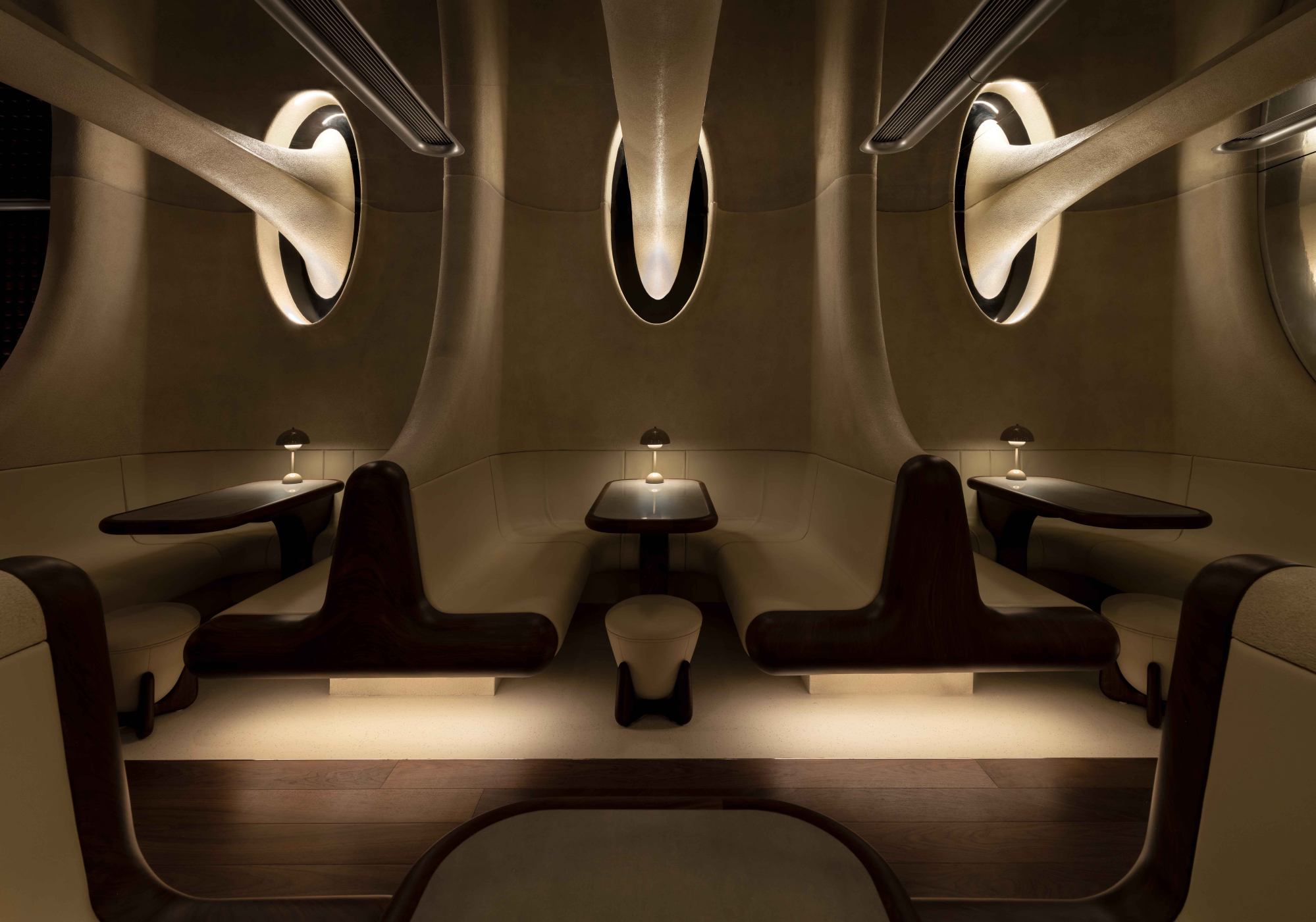
“The ambiguity in the design is part of the experience, inviting visitors to imagine and interpret the space according to their own preferences,” says Chow.
“Inspired by an underground cistern, the bar also draws influences from sci-fi spaceships and submarines. The entrance tunnel also features moving lamps inspired by surveillance cameras, which add a mysterious vibe and set the tone for the guests as they enter the bar.”
Most of the components in the organic and curvilinear space were built off site. Fibreglass was used to create the arches that envelop the space as well as the main banquette seating, to which leather upholstery was subsequently applied.
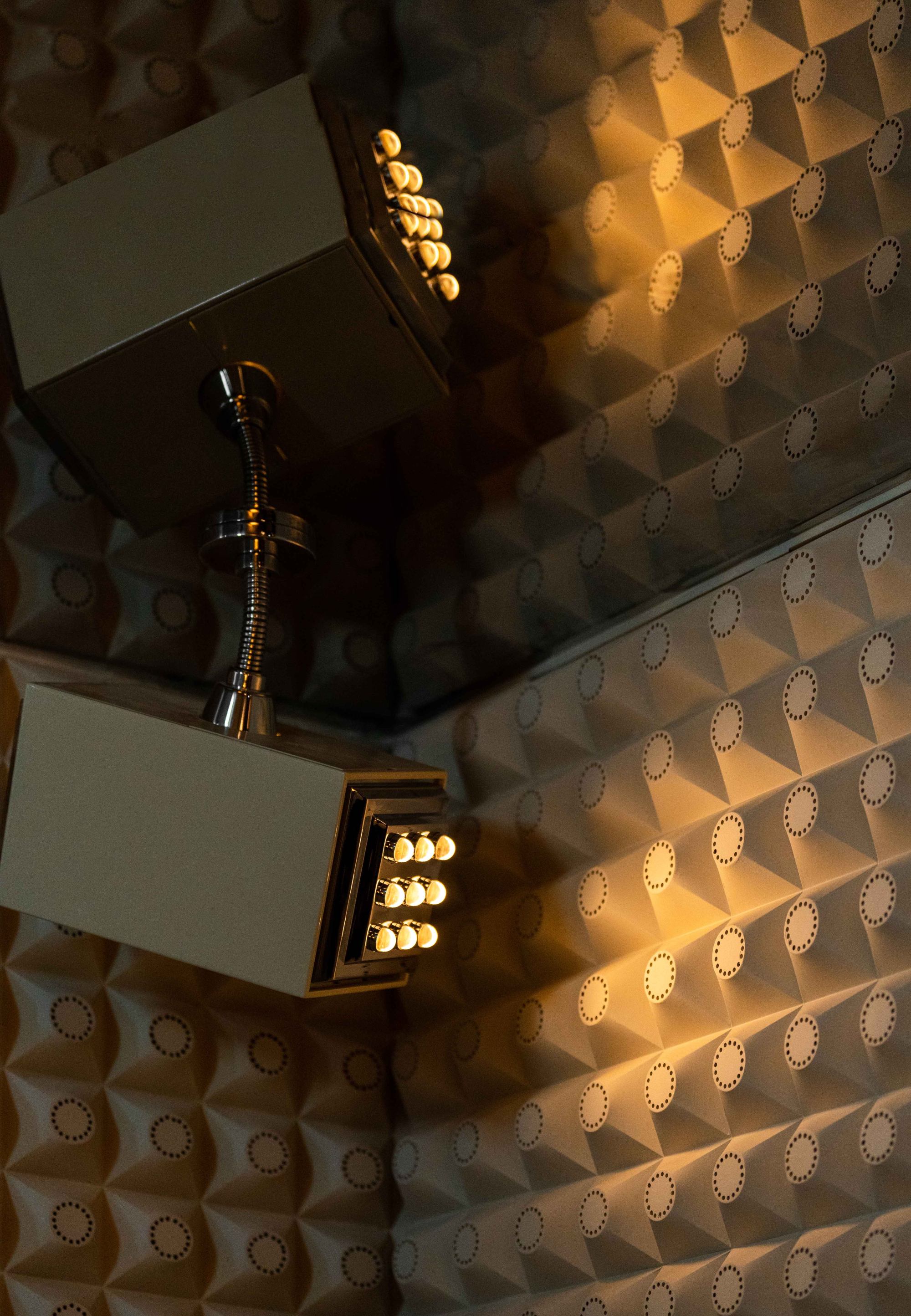
Chow worked with lighting designer Eugenia Cheng, founder of architectural lighting design practice LightOrigin Studio, to install strategically placed lighting to emphasise the arched beams.
At floor level, it gives the illusion of floating booths and above the bar area, where a faux circular skylight mimics the soft glow of sunset, it reinforces the bar’s connection to the iconic portholed building beneath which it is housed.
So impressive are the effects that Cheng’s work on the project won top prize in the Best of the Best category at the prestigious international d[arc] lighting awards 2023. Voted for by her industry peers, it was a significant recognition of Hong Kong design.
What Olafur Eliasson artworks taught an architect about engaging audiences
What Olafur Eliasson artworks taught an architect about engaging audiences
“In Hong Kong, people are seeking unique experiences when it comes to bars,” says Chow. “They desire more than just great drinks; they want visually stunning environments.”
Ella, 26F, The Trilogy, H Code, 45 Pottinger Street, Central. Instagram: @ellaxoxo.hk
001, Block 10, Tai Kwun, Central. Instagram: @001.hk
Artifact, LG/F, Jardine House, 1 Connaught Place, Central. Instagram: @artifact_bar

